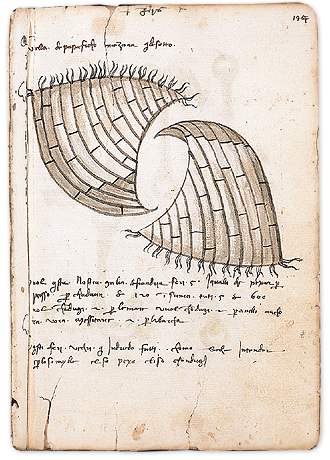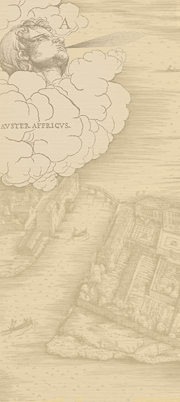Manuscript Viewer: Non Flash Version
Shipbuilding: Lateen Sails (p. 144b)

To conserve the energy of the oarsmen, galleys moved under sail whenever possible. Large triangular lateen sails were used instead of square sails. These sails were sewn together from numerous pieces of sailcloth, as shown here. Michael includes lengthy discussions of sails for the five ships he describes. The level of detail reflects his duties as a senior officer, responsible for making sure his galley carried the proper number of sails as well as materials for repair.
See enlargement:
+ Ihesus + Vella de papaficho mezana qui de sotto. Vuol questa nostra galia de Fiandria feri 5, i qualli die pexar per passo per chadaun libre 120. Insuma tuti 5 libre 600. Vuol chondugi 2 per le mare. Vuol chondugi 2 per anelli. Ancho- ra vorà messitarie 2 per la barcha. E questi feri vedirì qui indriedo fatti chomo se die intender, e per lo simylle el so pexo e li so chondugi. //
+ Jesus + Middle mast storm sail as below. This Flanders galley needs 5 anchors, which should each weigh 120 pounds per pace. In total the 5 are 600 pounds. It needs 2 blades for the sea. It needs 2 blades for the rings. Also it will need 2 grappling anchors for the boat. And these anchors you will see on the back made as they should be, and similarly their weight and their blades.











